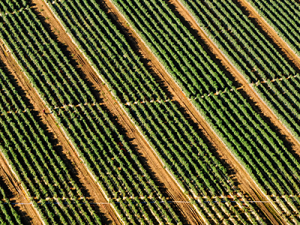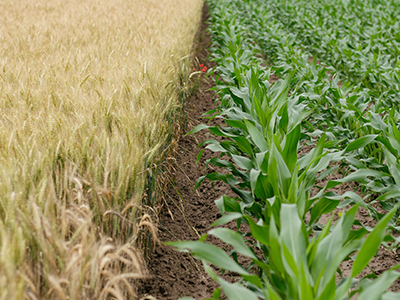Sowing the Oats of Data: How Statistics is Solving World Hunger
December 22, 2016
Sowing the Oats of Data: How Statistics is Solving World Hunger
Farming practices around the world are rapidly developing with new technologies and agriculture is beginning to enter the digital age of big data. How are farmers using statistics and what difference can it make?
Erik Andrejko, a data scientist at The Climate Corporation, discusses in the video “Statisticians Making a Difference” how his work is improving agriculture production to better feed a growing population. For example, The Climate Corporation has the ability to analyze years of weather and soil data to predict the best timing for planting crops or using fertilization. The company incorporates this information into digital tools that allows farmers to monitor crops and make adjustments for higher production yields.
 Analyzing large sets of data not only helps create higher production yields, but allows for increasingly efficient farming. The Climate Corporation receives millions of acres of data from farmers utilizing its tools, which provides insights that can help develop more precise agriculture techniques. The ability to implement precise farming methods supported by data can help reduce land consumption and the amount of chemicals or pesticides used in crops.
Analyzing large sets of data not only helps create higher production yields, but allows for increasingly efficient farming. The Climate Corporation receives millions of acres of data from farmers utilizing its tools, which provides insights that can help develop more precise agriculture techniques. The ability to implement precise farming methods supported by data can help reduce land consumption and the amount of chemicals or pesticides used in crops.
In addition to contributing to the growth of environmentally sustainable farming, big data has the power to help solve world hunger problems in underdeveloped regions. Precision agriculture techniques allow farmer to know precisely how much and when to apply water, fertilizer, seeds and other variables at the right amounts and time to yield the most return.
One example is the Africa Soil Information Service (AfSIS) project funded by the Bill and Melinda Gates Foundation. This project aims to create a continent-wide digital soil map framework for Sub-Saharan Africa to help farmers make better decisions concerning the availability and suitability of farming land. Not all the technology needs to be complex either. In Challenge Advisory’s Knowledge Items blog, Clive Blacker, Director of Precision Decisions citied simple text message alerts being used to raise yields in Africa as one example.
 The American Statistical Association (ASA) outlines further ways in which statisticians contribute to improving the agriculture industry. For instance, statisticians work with animal and plant breeders to increase production and work with food scientists to help ensure the safety of food products. In addition, statisticians provide information to determine fair commodity prices and develop statistical surveys to help inform farm and food policy.
The American Statistical Association (ASA) outlines further ways in which statisticians contribute to improving the agriculture industry. For instance, statisticians work with animal and plant breeders to increase production and work with food scientists to help ensure the safety of food products. In addition, statisticians provide information to determine fair commodity prices and develop statistical surveys to help inform farm and food policy.
If you are interested in learning more about how statisticians are making a difference in the world beyond agriculture, take a look at ASA’s “Statistical Significance Series” or checkout the video “Statisticians Making a Difference.”
Reviewed by the This is Statistics Team 06/2023
Related Posts

Hindsight Is 2023 for Former Statistics and Data Science Students
It’s back-to-school season! Gear up for the upcoming semester and consider diving into the captivating world of statistics and data science. Looking for diverse job opportunities that span across every industry? Look no further! With a variety of graduate programs and jobs, now is a great time for students to become data scientists and statisticians….

Elizabeth J. Kelly: “Statistics is for Adrenaline Junkies”
Elizabeth J. Kelly has always loved math, and as a professional statistician at Los Alamos National Laboratory (LANL) and a recreational rock climber, Elizabeth is an avid thrill-seeker who enjoys a challenge. “Math reminds me of climbing, including the need to focus, problem solve and persevere. I guess I ended up in statistics because I…

